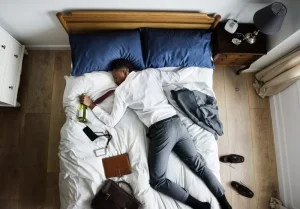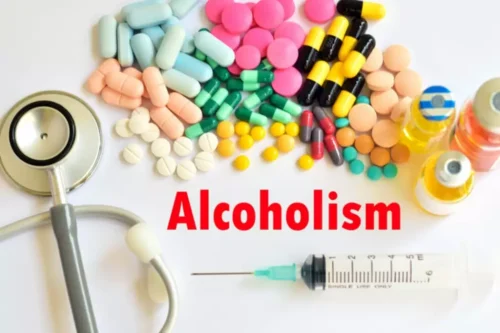
Once rhinophyma becomes severe, there are visible and obvious changes to the shape, skin and size of the nose. In many cases, doctors are not able to definitively find the cause of rhinophyma. Inpatient treatment may be necessary if you cannot stop drinking on your own. Medication can also be used to help manage withdrawal symptoms and cravings.
Alcohol Addiction Treatment

All too often, the stigma of alcoholism and addiction leads to discrimination, avoidance, and rejection of people struggling with this disease. Rhinophyma is not directly caused by alcoholism or regular alcohol consumption. Some people with rosacea develop rhinophyma, but people without rosacea can have this disorder, too. Later, the nasal skin grows and the tip of the nose becomes larger. It is benign initially, but it may block airways and increase the risk of skin cancer. Scientists haven’t fully figured out exactly how rhinophyma develops.
What is Alcoholic Nose or Rhinophyma?
Treatment for basal cell carcinoma usually involves surgery to remove the affected tissue. Fields, an early 20th-century American actor known for his heavy drinking, who called the bumps on his enlarged nose “gin blossoms”. Avoiding these triggers may help keep the scarring caused by rhinophyma at bay, and doctors may choose to treat rosacea and rhinophyma with anti-inflammatories and topical antibiotics. When a person is concerned they may have rhinophyma, or any other form of rosacea, a doctor can usually diagnose this condition by observing the patient’s face. Your doctor will treat early rhinophyma with oral medications, such as antibiotics or isotretinoin.
Not Sure How to Quit Drinking? Here’s Your Guide
Before discussing potential treatment options for alcoholic nose, it is important to understand whether or not alcohol itself is truly to blame. As it turns out, drinking alcohol (even in excessive amounts) has not been proven to directly cause rosacea. Surgical treatment can remove tissue overgrowth, reshape disfigured noses, and minimize the appearance of enlarged blood vessels. It may be completed with a scalpel, laser resurfacing, dermabrasion, or via cryosurgery. Since rhinophyma is a form of rosacea, the treatment for rhinophyma is similar.
For Immediate Treatment Help Call 800-526-5053

Rosacea flare-ups can also be caused by the consumption of other substances, such as hot drinks, chocolate, or spicy foods. The most noticeable symptom of rhinophyma is swelling and redness of the nose and face. If a person has an existing rhinophyma condition, alcohol may aggravate it. If caught in the early stages, however, symptoms can often be managed with medication and lifestyle changes. There is no cure for rhinophyma, and it typically does not go away without surgery.
Contact RehabNet.com today on our free and confidential helpline to find out more about how you can get started in addiction recovery right away. There are numerous cases of individuals who have treated and continued to manage their rhinophyma successfully. Rhinophyma can be difficult on a person’s self-esteem, as it can be difficult to hide and can inspire a lot of judgment and social stigma. Rhinophyma can often be diagnosed through a visual exam, as long as a patient is presenting multiple physical features of the condition. And while it can happen to both drinkers and non-drinkers, it is more likely to occur in people who consume alcohol regularly. These symptoms can be treated with antibiotics such as tetracycline, metronidazole, and erythromycin.
Common treatment options include medication, behavioral therapies, and 12-step support groups. If you’re worried about alcohol consumption leading to drinker’s nose or rhinophyma, you may also show signs of alcohol abuse. Given its name—alcoholic nose—it’s not hard to figure out that there was once thought to be a connection between alcohol abuse and a large, red, and bulbous nose. Rosacea is a chronic skin condition that is characterized by facial flushing—especially in the nasal area or cheeks—and irregular redness. As part of rosacea, small, red, and pus-filled bumps might also form on the face.

Treatment Process
If you or a loved one is living with rhinophyma, please know that you are not alone and that there are actions you can take to feel better and start to heal from this condition. It is highly possible for others to achieve these types of results, however, alcohol nose it is important to remember that early intervention is key as well as adhering to a given treatment plan. Not all cases of rhinophyma are simple to recognize, as it can present differently depending on how far along the condition has progressed.
- If you’re concerned about the effects of alcohol on your nose, you may want to consider cutting back on your consumption.
- It is because of this misunderstanding of rhinophyma and the effects of alcohol that it has been given nicknames like “whiskey nose” and “drinker’s nose”.
- These sores often look splotchy, have spider-like veins, or appear acne-like.
- A spreading redness could move across the cheeks, nose, and other areas with blood vessels close to the skin.
In people who already have rosacea and rhinophyma, this can mean an increase in inflammation, flushing, and the further progression of these conditions. This means that in someone who already has rosacea, heavy drinking may cause the rosacea to become more severe and they may then develop symptoms like rhinophyma. Drinking can increase the effects of existing rosacea and may increase the risk of this condition developing. However, many people who use alcohol heavily do not develop rosacea, and rosacea does often occur in people who do not drink alcohol or only use it in moderation. “Alcoholic nose” is a term given to the medical condition rhinophyma when it’s thought to be caused by alcohol use. If you think your drinking habits are causing your alcoholic nose flare-ups, know that the best way to stop them is to quit drinking.